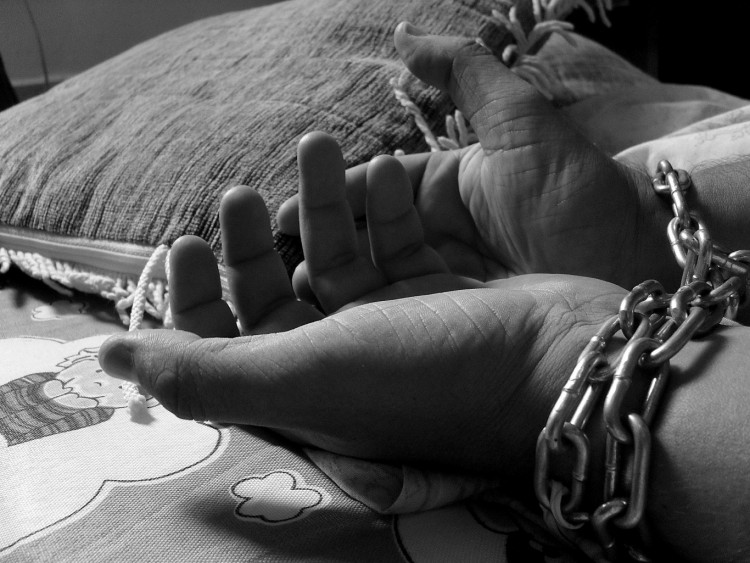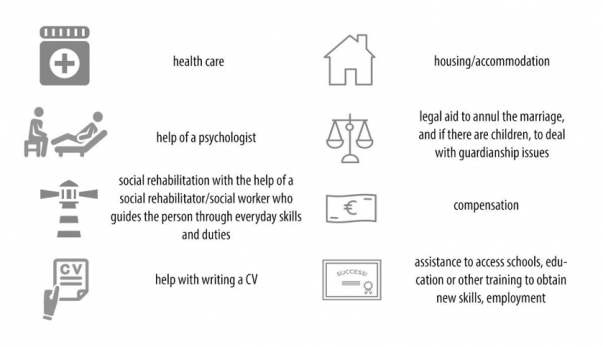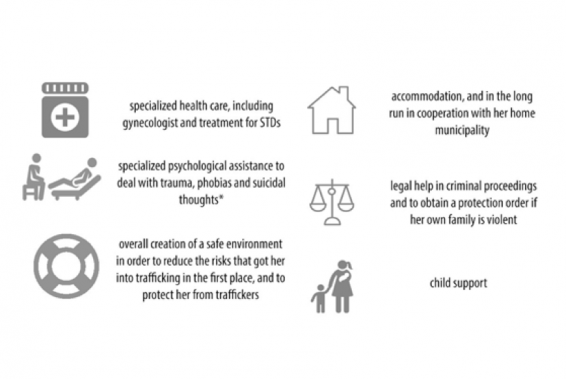Human trafficking in Latvia – Addressing the challenge of transnational organized crime

Human trafficking in Latvia – Addressing the challenge of transnational organized crime in the context of the Council of the Baltic Sea States
This article analyses the development and current situation of human trafficking in Latvia as well as Latvia´s international engagement in the context of the Council of the Baltic Sea States (CBSS) to counter it. After explaining the term human trafficking, the current situation in Latvia is described. Further, Latvian state initiatives and the victim assistance program are outlined. Taking into account the transnational aspect of human trafficking networks, Latvia´s engagement in the international cooperation CBSS – Task Force in Human Beings (TF-THB) is analyzed. Consequently, efforts to counter the trafficking in human beings are increased in Latvia and the Baltic Sea Region. However, certain factors hinder prosecution of traffickers, for example, limited resources and education regarding victim identification in the society and law enforcement authorities, the difficulty to detect money flows of multinational trafficking networks as well as the dilemma between victim protection considering the psychological trauma and the necessity of public testimonies to prosecute traffickers.
Human trafficking and its current situation in Latvia
Human trafficking describes the exploitation of a human being by a third person. The process is influenced by social, economic, cultural or other factors. Particularly vulnerable groups of trafficking victims are people with difficult or disfavored backgrounds, for example, poverty, lack of social or economic opportunities, societal isolation and gender discrimination, missing legal migration channels or conflict in the origin country. The general development of human trafficking shows a diversification regarding the purpose such as property crime, drug smuggling, identity fraud but also more complex ways and means to exploit others. Ways of recruitment and targeting potential victims of trafficking take place online and on social media, for example, Draugiem.lv or Facebook. Often, the victims are not aware of the situation or the circumstances. Violence is becoming less prominent to coerce a person while economic, psychological or other less obvious factors are commonly used. With sexual exploitation being the most identified way of human trafficking, sham marriages and forced labor are increasing in Europe, the Baltic Countries and the Baltic Sea Region in general. The increase is also based on the newly widened focus of government authorities and societies directed at other forms of human trafficking than sexual exploitation.
Latvia has usually been a source country for human trafficking which refers to victims originating from Latvia and being trafficked to other countries. Due to the hidden and illegal nature of human trafficking as well as diverse governmental reporting structures, accurate description of human trafficking cases is not possible to display. However, statistics show the state´s efforts in combatting human trafficking as well as the persecution of traffickers and identification of victims. The Tier categorization system in the illustration below refers not to the extent of human trafficking but to the government`s standards to combat it. This refers to the legal prohibition of human trafficking, accurate punishment to deter it and sustained efforts to investigate the crime and the identification of victims.

US Department of States. 2019. TRAFFICKING IN PERSON REPORT, page 51.
The trafficking in humans is categorized in labor and sex trafficking with the latter also involving brokered marriages in Western Europe mostly Ireland and the UK. Other destination countries for Latvian victims of human trafficking are Sweden, Cyprus, Germany, Greece, and Brazil. For sham marriages, women from the Baltic States are targeted by word-of-mouth or online to participate in return for some alleged remuneration or job in Western Europe. The UK and Ireland are preferred countries because their approach to registering marriages is more liberal. Additionally, the large community of third-country nationals in the two countries provides an environment in which recruiting victims of brokered marriages can seek support. With the fictitious marriage, the victims are used to enable third-country nationals’ entrance to the EU. Child sex trafficking increased according to Latvian Government authorities with children in state orphanages being most vulnerable. The labor trafficking refers mostly to Latvian adults who are sent and forced to work in other parts of Europe often receiving no salary. Latvia is also a transit country with work agencies handing out working permits for foreigners originating either in Ukraine, Bangladesh, India, Pakistan or Central Asia and then sent to other European countries to work for other companies without being paid. Often the forced labor takes place in the agriculture and construction industries.
Latvian State initiatives
The general Latvian policy is outlined in the National Strategy for the Prevention of Trafficking in Human Beings 2014-2020 which is implemented by the Ministry of Interior. Tracing the development of Latvian anti-human trafficking policies, Laura Dean argues that from 2000 to 2016, three policy types evolved. The criminalization of human trafficking took place in public policy which was accompanied by national action programs including raising awareness, training for experts and assistance to victims. This was followed by regulations and laws that allowed more services for victims such as state-funded reintegration. The public awareness about human trafficking in Latvia evolved gradually, beginning with a focus on sexual exploitation. Furthermore, the increasing awareness of societal organizations and state authorities about the issue of human trafficking led to the discovery of other fields, such as fake marriages and forced labor.
The current Latvian state initiatives are intensified to tackle the problem of human trafficking. The initiatives are envisioned in the 2014-2020 National Trafficking Prevention Program as a national action plan. As well as this, forced labor received the attention of government authorities, resulting in investigations within Latvia. The Latvian State Police Unit for the Fight against Human Trafficking is staffed with 20 full-time police officers in Riga. State-funded victim assistance programs are also part of the national action plan. However, the training of police and some national action plan´s activities did not receive sufficient funding. Moreover, the convicted traffickers got lenient sentences with no jail time. This is a crucial shortcoming which hinders the deterrence of human trafficking.
The underlying problem is limited knowledge of officials about trafficking indicators and victim identification. Indicators refer to observing psychological and physical signs of coercion that victims were exposed to. This concerns all kinds of human trafficking whether minors in state care institutions forced into commercial sex, forced sex work in Latvia´s legal prostitution industry or forced labor in agriculture and construction. Intensifying the problem of victim identification are financial, cultural or societal factors influencing the victim not to report to authorities. Societal taboos and shame hinder LGBTQ+ prostitution victims to seek help. Not being able to speak the destination countries language, dependency on financial income or group pressure by the family to not make the case public are just other examples that limit the reporting of sex trafficking. Regarding orphanages, reports indicate that children were sexually exploited and received only limited assistance. In addition, since 2018 investigations and convictions declined compared to the years before. Four new cases were investigated in contrast to seven cases in 2017. Despite concerns of labor trafficking of Ukrainian workers, no victims were identified in the Latvian agriculture and construction industry.
Another general concern hindering prosecution of human traffickers is the importance of victim protection. The trauma of victims of human trafficking does not easily permit victims to speak openly about their experiences and provide testimonies to state authorities. The complexity increases if victims of human trafficking return to their country of origin while the juridical process persecuting the traffickers takes a considerable amount of time and sometimes even requires the victims to be present. Therefore, law enforcement agencies need to stay in contact with the victims after they return and participate in victim assistance programs.
Victim assistance programs
If a case of human trafficking was officially reported by the Latvian police, victims of human trafficking are eligible to the state-funded victim assistance program. If victims decide not to report to the police, a committee of experts decides whether a victim is admitted to the social rehabilitation program. Contracted by the Latvian government, two NGOs Centre Marta and Shelter Safe House support victims of human trafficking as part of the victim assistance program. The project includes medical and psychological assistance, legal advice, housing, and reintegration support. The victim assistance programs received €135,110 in 2017 and 2018. While 24 victims were enrolled in 2017, the project in 2018 supported 20 victims. The NGO Patvērums Drošā māja (Shelter Safe House) supported 162 victims since 2007 until today which is approximately one victim per month over a period of 12 years. Another significant trend regarding the victim assistance programs is the increase in male victims accepting the assistance programs. From one male victim in 2001 the number had risen to 8 in 2014 who received social rehabilitation services.
Despite the process made, a recurring problem is the period of assistance programs. Many victim assistance programs last for only 6 months but do not entail any long-term perspectives. This is problematic for the victims because societal reintegration and psychological assistance is a long-term process while the funds stop after 180 days. There are no reports or studies about trafficking victims and their reintegration after the assistance program. While municipalities are supposed to follow-up with the reintegration process, systematic programs or monitoring of the process is missing. Moreover, municipalities do not receive state funding from the social services fond but use their municipal budget. Long-Term cooperation between the NGOs and the municipalities can potentially benefit victims of human trafficking from a long-term perspective as well as bolster awareness within municipalities to prevent individuals from becoming victims of human trafficking. For exemplification purposes the typical assistance plans regarding sham marriage and sexual exploitation are depicted below:

 Lietonen, A. and Ollus, N. 2017. The costs of assisting victims of trafficking in human beings. European Institute for Crime Prevention and Control, affiliated with the United Nations (HEUNI), Council of the Baltic Sea States Task Force against Trafficking in Human Beings (CBSS TF-THB), p. 14.
Lietonen, A. and Ollus, N. 2017. The costs of assisting victims of trafficking in human beings. European Institute for Crime Prevention and Control, affiliated with the United Nations (HEUNI), Council of the Baltic Sea States Task Force against Trafficking in Human Beings (CBSS TF-THB), p. 14.
Latvia´s engagement in the international context of the Council of the Baltic Sea States
In Latvia, there are approximately 200 work agencies that provide working permits for foreigners from Ukraine or Tajikistan to bring them into Latvia. The trafficking networks consisting of Latvians or ethnic Russians living in Latvia use the status of a work agency to cover their activities and recruit potential victims with contacts in the mentioned source countries. Some of the workers are sent to other countries such as Germany, Poland or the Netherlands to work for other companies without getting a salary. In the cases of human trafficking, the Latvian work agencies serve as an intermediate handler. The main problem is lacking victim identification by authorities. Instead of recognizing the victims as victims of forced labor, they are perceived as a normal party within a conflict of interests between employer and employees with the workers not receiving a salary. Moreover, law enforcement does not identify the indicators and signs of trafficking whether they are psychological or physical. The indicators are also financial flows for the exploitation of a person or the mentioned disfavored background of a victim that points to a potential vulnerability.
Addressing the challenge of transnational trafficking networks is the CBSS Task Force against Trafficking in Human Beings (CBSS TF-THB). The multilateral forum enhances international cooperation and coordination of activities and information sharing in the Baltic Sea Region. Between 2017 and 2018, Latvia was chairing the Baltic Sea Task Force on Organized Crime. The CBSS TF-THB is operating since 2006 and consists of Denmark, Estonia, Finland, Germany, Iceland, Latvia, Lithuania, Norway, Poland, Russia, Sweden, as well as the European Commission. Under Latvian chairmanship in 2016, the STROM-project was initiated and implemented in 2017. The project envisioned to bolster municipalities` work against human trafficking. This targeted the mentioned shortfall between the state-sponsored victim assistance programs and the municipality work and integration efforts afterward. As well as this, the CBSS TF-THB is very beneficial for local NGOs to realize a range of projects and exchange lessons learned.
Conclusion
Overall, the awareness of the Latvian society and government authorities to address the challenge of human trafficking is increasing. The analysis showed the development of human trafficking patterns in Latvia and depicted state initiatives, the victim assistance program and Latvia´s international engagement in the CBSS. Moreover, crucial shortcomings were identified. Firstly, the decreasing prosecution of traffickers and lacking knowledge of judges regarding trafficking, anti-trafficking laws, and judicial proceedings result in minor sentences for traffickers. This is insufficient to deter future crimes. Secondly, limited resources and education for law enforcement regarding victim identification and understanding of physical or psychological indicators of trafficking hinder successful persecution. Thirdly, the number of victims admitted to the assistance program decreased. As well as this, children in state care institutions are not eligible for the victim assistance program leaving them dangerously exposed to human trafficking. General problems hindering the combatting of human trafficking are the difficult evidence collection concerning hardly detectable money flows and the dilemma between victim protection with their psychological trauma and the need for public testimonies to prosecute traffickers.
In Latvia, the Ministry of Welfare cooperates with the two external service providers "Center Marta" and Shelter Safe House to realize a victim assistance program. Both have been interviewed for this article. They differ slightly in their costumer profile of male, female and children and field of expertise regarding sex and labor trafficking. The NGOs spread public awareness about the problem by providing education and informational resources and conducting campaigns directed to counter human trafficking. For more information about the NGOs please see the endnotes. The interview with Shelter Safe House took place on the 9th of July 2019 at Lāčplēša iela 75 - 1 B, Rīga, LV-1011. The interview with "Center Marta" took place on the 12th of July 2019 at Matīsa iela 49-3, Rīga, LV-1009.
Bibliography
[1]Council of the Baltic Sea States (CBSS) Secretariat (2016). Human Trafficking, Baltic Sea Region Round-Up 2016, https://www.cbss.org/wp-content/uploads/2016/11/Human-Trafficking-Baltic-Sea-Region-Round-Up-2016.pdf, accessed on 11th of July 2019.
[2]Department of States. 2019. TRAFFICKING IN PERSON REPORT, page 41, https://www.state.gov/wp-content/uploads/2019/06/2019-Trafficking-in-Persons-Report.pdf, accessed on 29thof July 2019.
[3]US Department of States. 2019. TRAFFICKING IN PERSON REPORT, page 51, https://www.state.gov/wp-content/uploads/2019/06/2019-Trafficking-in-Persons-Report.pdf, accessed on 29thof July 2019.
[4]US Department of State. 2017 Trafficking in Persons Report p. 247, https://www.state.gov/reports/2017-trafficking-in-persons-report/, accessed on 11th of July 2019.
[5]Council of the Baltic Sea States (CBSS) Secretariat (2016). Human Trafficking, Baltic Sea Region Round-Up 2016, https://www.cbss.org/wp-content/uploads/2016/11/Human-Trafficking-Baltic-Sea-Region-Round-Up-2016.pdf, accessed on 11th of July 2019.
[6]Patvērums Drošā māja.2017. Fictitious Marriages, http://www.patverums-dm.lv/en/fictitious-marriages, accessed on 11thof July 2019.
[7]Council of the Baltic Sea States (CBSS) Secretariat (2016). Human Trafficking, Baltic Sea Region Round-Up 2016, https://www.cbss.org/wp-content/uploads/2016/11/Human-Trafficking-Baltic-Sea-Region-Round-Up-2016.pdf, accessed on 11th of July 2019.
[8]Interview with Patvērums Drošā māja.
[9]US Department of State. 2019 Trafficking in Persons Report: Latvia, https://www.state.gov/reports/2019-trafficking-in-persons-report-2/latvia/, accessed on 11th of July 2019.
[10]Laura A. Dean (2018) Criminalizing human trafficking in Latvia: the evolution and implications of human trafficking policies, Journal of Baltic Studies, 49:2, 129-155, DOI: 10.1080/01629778.2018.1441887, accessed on 11th of July 2019.
[11]Interview with Patvērums Drošā māja.
[12]US Department of State. 2017. Trafficking in Persons Report, p. 246, https://www.state.gov/reports/2017-trafficking-in-persons-report/, accessed on 11th of July 2019.
[13]Council of the Baltic Sea States (CBSS) Secretariat (2016). Human Trafficking, Baltic Sea Region Round-Up 2016, https://www.cbss.org/wp-content/uploads/2016/11/Human-Trafficking-Baltic-Sea-Region-Round-Up-2016.pdf, accessed on 11th of July 2019.
[14]Interview with Patvērums Drošā māja.
[15]US Department of State. 2019. Trafficking in Persons Report: Latvia, https://www.state.gov/reports/2019-trafficking-in-persons-report-2/latvia/, accessed on 11th of July 2019.
[16]POLINA SMIRAGINA-INGELSTRÖM. (2019). Challenges to Masculinity in Human Trafficking Assistance Programs, https://www.cbss.org/wp-content/uploads/2019/03/Challenges-to-Masculinity_Riga.pdf, accessed on 11th of July 2019.
[17]US Department of State. 2019 Trafficking in Persons Report: Latvia, https://www.state.gov/reports/2019-trafficking-in-persons-report-2/latvia/, accessed on 11th of July 2019.
[18]Stabina, Lasma (2019). Human trafficking – a crime with too few convictions and too many victims, International conference “Human trafficking – a crime with too few convictions and too many victims” under the Latvian Presidency in the Council of the Baltic Sea States in Riga on 21 – 22 February 2019, accessed on 11th of July 2019.
[19]Interview with Centrs Maja
[20]US Department of State. 2019 Trafficking in Persons Report: Latvia, https://www.state.gov/reports/2019-trafficking-in-persons-report-2/latvia/
[21]Council of the Baltic Sea States (CBSS) Secretariat (2016). Human Trafficking, Baltic Sea Region Round-Up 2016, https://www.cbss.org/wp-content/uploads/2016/11/Human-Trafficking-Baltic-Sea-Region-Round-Up-2016.pdf..
[22]Interview with Patvērums Drošā māja
[23]Lietonen, A. and Ollus, N. 2017. The costs of assisting victims of trafficking in human beings. European Institute for Crime Prevention and Control, affiliated with the United Nations (HEUNI), Project: STROM II “Strengthening the role of municipalities in the work against trafficking in human beings”, Council of the Baltic Sea States Task Force against Trafficking in Human Beings (CBSS TF-THB), p. 8, https://www.cbss.org/wp-content/uploads/2012/11/Cost_calculation_report.pdf, accessed on 11th of July 2019.
[24]Lietonen, A. and Ollus, N. 2017. The costs of assisting victims of trafficking in human beings. European Institute forCrime Prevention and Control, affiliated with the United Nations (HEUNI), Project: STROM II “Strengthening the role of municipalities in the work against trafficking in human beings”, Council of the Baltic Sea States Task Force against Trafficking in Human Beings (CBSS TF-THB), p. 14, https://www.cbss.org/wp-content/uploads/2012/11/Cost_calculation_report.pdf, accessed on 11th of July 2019.
[25]Interview with Patvērums Drošā māja.
[26]Council of the Baltic Sea States (CBSS) Secretariat (2016). Human Trafficking, Baltic Sea Region Round-Up 2016, https://www.cbss.org/wp-content/uploads/2016/11/Human-Trafficking-Baltic-Sea-Region-Round-Up-2016.pdf, accessed on 29th of July 2019.
[27]Interview with Patvērums Drošā māja.
[28]Department of States. 2019. TRAFFICKING IN PERSONS REPORT, page 289, https://www.state.gov/wp-content/uploads/2019/06/2019-Trafficking-in-Persons-Report.pdf, accessed on 29th of July 2019.
[29]More information about Centrs Marta http://www.marta.lv/?langs=1801
[30]More information about Safe Shelter House: http://patverums-dm.lv/en/about-us
Publicēts 12. augusts, 2019
